There are lists of politicians, writers, CEO’s, artists, and film people, even an astronaut who were in the Peace Corps in their early or later years. Over the years there have also been sports figures who have been PCV’s. They include an Olympic champion, a Boston Marathon champion, a famous coach, a not so famous runner but one who has been a long-time contributor to the sport, and a few more. Here is the list of Peace Corps Volunteers as well as track guys of whom I'm aware.
Bob Schul (Malaysia 1971-72)
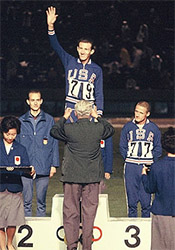
Bob Schul (center) 5,000m Gold Medal, 1964 Tokyo, Olympics
Let’s start with the Olympic champion, Bob Schul. Bob is the only American ever to win the 5,000 meters in the Olympics which he did in 1964. After college at Miami of Ohio and a tour in the Air Force, Bob would come under the influence of the great Hungarian emigre coach Mihaly Igloi, who doled out enormous quantities of repeat running intervals that only a few good runners could survive without permanent injury. And Bob thrived on Igloi’s workouts. By 1963 he was running world class times, and in 1964 he was just about unbeatable in the range of 3,000 to 5,000 meters. He would lead the US to first and third place in the 5,000 meters in Tokyo that year.
Bob returned home and continued to run, and by 1968 his career on the track was just about over. Bob was hired by the Peace Corps to be the national coach of Malaysia from April 1971 to April 1972.
In 2000, Bob published his memoir of running In the Long Run.
•
Amby Burfoot (El Salvador 1968)
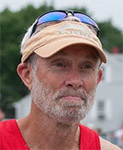
Amby Burfoot
Anyone who knows much about marathoning or reads Runners’ World is familiar with Amby Burfoot. Amby won the Boston Marathon in 1968 and has been a long-time contributor to Runners’ World and is now senior editor. He has written a number of books on running including a history of the most influential women’s runners in the sport.
After he won Boston while still an undergrad student at Wesleyan College, that same year he saw an ad in The New York Times for a track coach in Ethiopia with the Peace Corps. It sounded like a divine intervention for him as Ethiopia was rapidly coming into the realm of world class distance running with Abebe Bikila having won the Olympic marathon in both 1960 and 1964. Where better to be 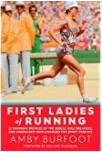 assigned as a distance coach? However, by the time Amby got in his application, the job had been filled, but he was offered and accepted a tour in El Salvador. He told me he was the only volunteer in his group assigned to live in the capitol, San Salvador, and coach young athletes. All the other volunteers were agriculture workers living in the countryside. (editor’s note: Abby Burfoot has written 6 books about running including First Ladies of Running.)
assigned as a distance coach? However, by the time Amby got in his application, the job had been filled, but he was offered and accepted a tour in El Salvador. He told me he was the only volunteer in his group assigned to live in the capitol, San Salvador, and coach young athletes. All the other volunteers were agriculture workers living in the countryside. (editor’s note: Abby Burfoot has written 6 books about running including First Ladies of Running.)
•
Tim Hickey (Tanzania 1964-66)
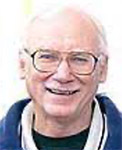 Unlike the first two PCV’s mentioned, Tim Hickey began making his name in the track and field world during his volunteer days and for many years after. His PCV service really set him on his career path. Tim grew up in the Midwest farmlands of Parker City, IN just outside of Muncie. He attended Ball State Teachers College (now Ball State University) and ran on their track team. After graduation he applied and got into the Peace Corps and was sent to Tanzania to be the National Basketball coach. When he saw the raw recruits he soon switched over to become the National track and field coach.
Unlike the first two PCV’s mentioned, Tim Hickey began making his name in the track and field world during his volunteer days and for many years after. His PCV service really set him on his career path. Tim grew up in the Midwest farmlands of Parker City, IN just outside of Muncie. He attended Ball State Teachers College (now Ball State University) and ran on their track team. After graduation he applied and got into the Peace Corps and was sent to Tanzania to be the National Basketball coach. When he saw the raw recruits he soon switched over to become the National track and field coach.
He had several runners who competed internationally for Tanzania including a sprinter Norman Chihota and a distance runner John Stephen. Stephen would become somewhat of a celebrity in the 1968 Mexico City Olympic film by Bud Greenspan. In the marathon, Stephen fell and injured his knee early in the race. But he got up and continued with some roadside bandaging and managed to finish the race at the tail end. Greenspan saw something in his effort to finish that endurance race that inspired him, and he featured Stephen’s arduous last strides toward the finish line.
When Tim returned home after his tour, he answered an ad for RPCV’s to teach in the public schools of Philadelphia. Many came; few stayed. Tim stayed for thirty years and served as coach at William Penn High School, an “inner city school” that met all the definitions which that term brings to mind. The school had no track and field facilities, so Tim coached his kids on the streets or in local parks. For many years William Penn was a powerhouse of Eastern and national high school track and field. The majority of his work was with the girls’ team and over forty of those girls won athletic scholarships to universities around the country. Today, Tim is revered in the track world in his adopted hometown. For most of that time he also served as director of the high school division of the Penn Relays, one of the three most important relay events in North America.
•
Bill Peck (Somalia 1965-66)
Bill Peck is less a household name in track and field than our earlier mentions yet to those who know him he meets all the criteria for respect and accomplishment in the sport.
Somalia was considered to be so difficult that assignments were only for 18 months rather than 24 months. There was only one working traffic light in the capital Mogadishu. As a sign of progress today there are probably no working traffic lights. And the Volunteers were told that they would be living on goat meat and tea for the duration, if they were lucky. During his service Bill organized the first national track and field championships ever in Somalia.
Recently he was honored by the Track and Field Writers of America (TAFWA) for his contributions to the sport.
Here is a transcription from TAFWA’s article about Bill in their July, 2019 newsletter.
2018 FAST AWARD TO BILL PECK — TAFWA is pleased to announce that Bill Peck is the winner of the FAST Award for 2018. We waited to announce this formally until we were able to locate Bill and present the award to him in person. Member Jack Shepard drove from his home in Los Angeles to Hemet, Calif., where Bill now resides, to make the presentation. (See photo.) An excellent runner in his own right, Peck began statistical compiling on his own in the early 1960s, probably while he was still an undergraduate at Occidental College in Los Angeles. He worked with data from early NCAA, AAU and Spalding guides at the beginning, and later prepared age-group lists for Starting Line magazine. In recent years he collaborated with Tom Casacky on the History of the California State Meet 1915 to 2006, a project he continues to work on. Because he does not have a car, phone or computer, he uses old-school methodology – transport by bicycle, record keeping by paper and pencil. As a runner, Peck was a scorer in the NCAA Championships for Oxy in ’60 (6th place) and ’61 (8th). He ran the Olympic Trials steeple in 1960 and had lifetime bests of 9:09.3 in that event and 30:38.0 in the 10k. He won the Mt SAC 10 in ’61 and is a member of the Occidental College Track and Field Hall of Fame. Prior to college, Peck served four years in the U.S. Marine Corps. He grew up near Laurel Canyon Boulevard, in the Hollywood Hills, and graduated from Hollywood High School. After college he taught history and coached at Eagle Rock and other high schools in the LA area.
Bill Peck and I were in training together at Syracuse University and would occasionally go on runs together. George Brose
•
Jerome McFadden (Morocco 1964-66)
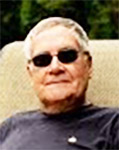 Jerome “Jerry” McFadden was a scholarship runner at the University of Missouri in the mid 1960’s. He finished second in the mile outdoors at the Big Eight Conference in 1963. His best time for the mile was 4 minutes and 5 seconds. He went from Columbia, MO to Morocco after graduation where he served as a track coach.
Jerome “Jerry” McFadden was a scholarship runner at the University of Missouri in the mid 1960’s. He finished second in the mile outdoors at the Big Eight Conference in 1963. His best time for the mile was 4 minutes and 5 seconds. He went from Columbia, MO to Morocco after graduation where he served as a track coach.
Among his many talents, Jerry is also a prolific writer. Here is what Amazon says about him.
The following piece is by Jerome McFadden. It recounts his time working as a coach in Morocco. This is a condensed version of an article which appeared in “Runners’ World” in the 1970’s.
Peace Corps Coaches
In 1963 we were the second Peace Corps group going into Morocco but definitely the
first contingent of athletic coaches being sent out into the world. Our small crew
included three track and three basketball coaches, two swimmers, and two wrestlers.
The term “Coach” was a big word considering all of us but one had just graduated
from college or grad school in May or June of that year. The main part of our gang were
to be English teachers, surveyors, and female home economists.
After three months of training at Utah State University, (French, Arabic,
Moroccan culture, coaching techniques and psychological evaluation) we arrived in-
country in September. the track coaches were immediately spread out to Casablanca,
Rabat, and Marrakech. I inherited the 350 meter cinder track in downtown Casa,
adjacent to the Ministere de Jeunesse & Des Sports ((Ministry of Youth & Sports).
The infield was hard dirt, all of this surrounded by a mini three tiered cement
spectator stand The first look at the available equipment was equally discouraging: a
rusty set of hurdles, a warped discus, and a pock marked shot that looked like replica
of the moon. Welcome to African track & field, circa 1963.
But we did have night lights!
That was because training sessions were held Tuesday through Friday
evenings, 7:00 to 9:00pm, with competitions on Sunday morning. Similar to Europe, all
sports in Morocco were based on the club system rather than the scholastic system as
in the USA. Half of the league came on Tuesday and Thursdays, with the other half on
Wednesdays and and Fridays. Sunday mornings were for competitions.
The high jump and long jump all landed in the same pit, a large rectangular sand
box with varying degrees of lumpiness. There were three cross bars to work with on the
high jump, but we tended to save them for the competitions as they were easily bent or
broken. We practiced instead with a red elastic rubber rope tied to the uprights. The
elastic would throb and bob in gross exaggeration at at the slightness touch. If the
jumper landed solidly on it, the elastic would tangle around his legs and pull the
uprights down on top of him. Needless to say, pole vaulting was not on the program.
The starting gun for the runs was too wooden clappers attached by a leather
strip. Nothing dramatic but sufficient.
The Sunday morning competitions were adjusted to however many athletes
showed up, which meant most were half track meets, skipping those events of little
interest and giving special attention to record attempts. In spite of the third world
equipment, the runners were serious, dedicated, and competitive, filling the track on
the evenings allowed to them and giving their best efforts at the Sunday meets.
My chief value was my stop watch (provided to me by the Peace Corps), my two
running shoes (provided to me by the Peace Corps), and my availability to be at the
track whenever needed: stop watches were as scarce as the other equipment, the
shoes could be lent out in emergencies (stuffing newspaper into the toe section helped
for a better fit), and I had no where else to go as I was assigned to this track.
Two years is too fast for any coach. You concentrate on one race at a time, or a
series of races designed to bring your runners along, with the series of “one races”
making a season. Then you suddenly wake up to realize you haven’t accomplished all
you wanted with the kids and the two years are past. And two years is too short to see,
hear, smell, and touch all that there is to see, hear, smell, and touch in Morocco – the
snow capped mountains, the labyrinth of the medinas, the market places in the south
with their Berber dancers, snake-charmers, and story tellers.
But I made some lifelong friends and have some great memories, and was not
surprised when the African runners became a force to be reckoned with.
Jerome W. McFadden is an award winning short story writer whose stories have appeared in 50
magazines, anthologies, and e-zines over the past ten years. He has received a Bullet Award for the best crime fiction to appear on the web. Two of his short stories have been read on stage by the Liar’s League London and Liar’s League Hong Kong. His collection of 26 short stories, entitled Off The Rails was published in October, 2019, and was named a finalist for the 2019 Indie Book Awards and the Indie National Book Award (NIEA) and has outstanding reviews He is also the co-editor of the BWG Writers Roundtable e-zine.
— Amazon
Jerry McFadden and I ran against each other occasionally when he was at Missouri and I was at Oklahoma. He always smashed me on the track. We became reacquainted many years later when I was coaching in Quebec and some of my rival coaches were his former students in Morocco. They persisted in asking me if I knew where Jerry was. I didn't, but once the internet came into being I did find him and we've been good friends ever since. He has provided a lot of information and photos to this blog, especially anything relating to track and field history of France. George
Roy Benson, Philippines 1972
How a Peace Corps Volunteer was Instrumental in Helping Start the Running Boom
Roy Benson (Philippines 1972) had been an assistant track coach at the University of Florida when he joined the Peace Corps to coach that sport in the Philippines. Frank Shorter, the winner of the marathon at Munich credits Benson with helping him to prevail in that race which had the effect of kicking off the running boom in the US. First here is Shorter’s account of how Benson was able to assist him in that win.
1972 Olympic Marathon
Shorter lined up for the marathon only having run four marathons. He was a novice and not favored. Ron Hill of Great Britain and Derek Clayton of Australia had both run under 2 hours and 10 minutes which was two minutes faster than Shorter ran in winning the Fukuoka Marathon for the first time in 2:12:50.4 on December 5, 1971 . Though Fukuoka was regarded as the de facto world championships at the time, Shorter went largely unnoticed by the media.
“That was an advantage for me,” says Shorter. “I didn’t have any pressure.”
The Fukuoka was won with a strategy Shorter and Bacheler had developed in their 5,000 meter and 10,000 meter races. He trained his body to surge or accelerate for periods of time to gain an advantage over his competition, then recover at a fast clip, then do it again. At the time, marathons were races of attrition. Shorter’s strength were those surges so he decided his strategy was to use that strength early on to win.
Between the ninth and tenth mile, Shorter ran a 4:33 mile to break away from the field. He was off on his own. UF Assistant Track and Field Coach Roy Benson had taken the year off from his duties to coach the Philippines track and field team and was there on the course in Munich for the marathon race. He was part of a Peace Corps coaching program that Benson had seen in an advertisement in Sports Illustrated. Jimmy Carnes granted him the year long sabbatical with the caveat that Benson return back to the program after that year. Benson secured a bike and rode along through the throngs of people lining the course to provide updates to Shorter who he knew well.
“Yes, he was key, “recalls Shorter of Benson. “At 15 to 16 miles he let me know I had a minute and 12 second lead. Then he was able to get to the 19- and 20-mile marks and give me another update. I did the math in my head. I was running 5 minute miles and the others would need to run 4:48 to catch me. I knew that no one could do that and I just needed to hang on.”
Though Shorter knew he had the win in hand, when he entered the stadium for the final lap, he was met with a crescendo of boos and catcalls. A German student, Norbert Sudaus, had jumped into the race and arrived some 35 seconds earlier than Shorter. The catcalls and boos were for Sudaus after the crowd learned that he was an imposter.
“It bothered others more than it bothered me, “Shorter says. “I knew no one had passed me and I had won.” His victory margin was by more than two minutes and his time, 2:12:19.8, was a personal best time. Karel Lismont of Belgium was second in 2:14:31.8. Mamo Wolde, the defending Olympic Champion was third in 2:15:08.4. Kenny Moore was fourth and Bacheler ninth in 2:15:39.8 and 2:17:38.2, respectively. It was a great showing for the Americans.
As a running blog writer I have been in contact over the years but had never heard that story. I was also curious about the coaches who went into the Peace Corps on one year contracts and whether they worked under different conditions from the people going in for two years. The following is Roy’s response to my query. It also indicates his prolific writing talent.
While we referred to ourselves as members of a branch of the PC called the Sports Corps, we were indeed plain vanilla Peace Corps volunteers.
We went thru the typical language and cultural training, got a “salary” of 600 pesos a month = $100.
We were attached to the national governing body, lived mostly in a room in the old national stadium and existed on Red Stripe beer and lots of rice, eggs and chicken. Maybe some dog?
I got in great shape training the distance candidates and decided to try my first steeplechase at their national championships which were also their Olympic trials.
Came to the first water jump, slipped on the wet hurdle, went straight up in the air then down into the deepest water with only my bald head showing. Fans loved yelling “Calbo” (baldy) as I came past the grandstand. Even though I managed to pass several runners, I still finished last because they would drop out when I caught them.
Thru all these years I wrote monthly columns for Running Times and Racing South mags. “Heart Rate Training” by me and friend Declan Connelly has had 2 editions selling over 26,000 copies and translated into French, Italian, Czech and 3 versions of Chinese.
In a future article I will share a New York Times article about the early days of distance running in Tanzania written by one of my Peace Corps colleagues Stephen Fisher, but it would be too long to add to this particular posting. George Brose

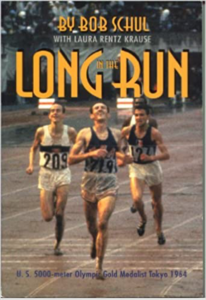



No comments:
Post a Comment